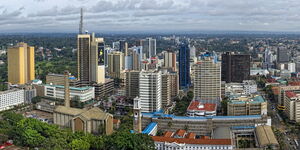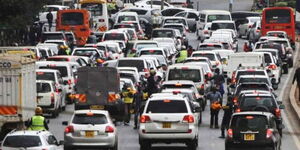The National Treasury has given the green light for the construction of the Rironi-Mau Summit highway, following the approval of the project proposal by the National Treasury's Public-Private Partnership (PPP) Committee.
This is after the PPP Committee established that the feasibility report submitted by China Road and Bridge Corporation (CRBC) and National Social Security Fund Trustees (NSSF) met all the requisite conditions.
According to the Kenya National Highways Authority (KeNHA), the feasibility report submitted on September 15, met all the technical, financial, environmental, social and legal conditions.
In a notice dated Thursday, October 23, the Authority also announced that the proposal met public interest, public-private partnership suitability, project feasibility and affordability criteria.
"The PPP Committee delivered the decision during its 47th Extraordinary PPP Committee meeting held on October 9 and determined that the project meets the public interest, project feasibility and affordability criteria," KeNHA announced.
"This disclosure is therefore made in line with the provisions of the PPP Act, Cap 430, The National Treasury Circular dated April 24, 2025, on Public Disclosure on Privately Initiated Proposals," it added.
Following the approval, CRBC, NSSF and Shandong Hi-Speed Road and Bridge International companies are expected to soon commence the construction of the 175-kilometre highway, which connects Nairobi and Nakuru cities.
As per KeNHA, the Ksh200 billion 4-lane highway project is expected to commence at Rironi in Kiambu and traverse through Nyandarua and terminate in Mau Summit, Nakuru County.
Meanwhile, KeNHA's latest announcement comes weeks after the Ministry of Transport completed conducting a public engagement exercise on the highway project.
The public participation exercise, which began in August this year, was conducted to incorporate public input and promote transparency for one of the country's most ambitious infrastructure projects.
The road is part of the larger A8 corridor connecting Nairobi to Western Kenya and forms a critical section of the Northern Corridor, which serves landlocked countries including Uganda, South Sudan and the Democratic Republic of Congo.
Its construction is expected to take place within 2 years to ease the persistent traffic congestion and shorten travel time to just one and a half hours.












